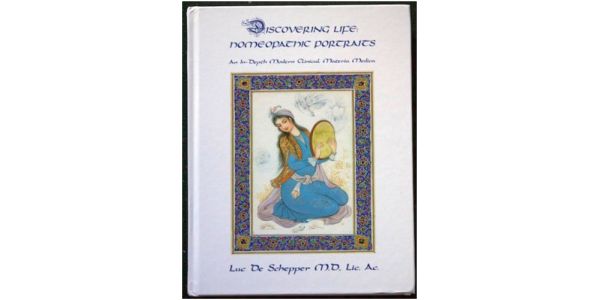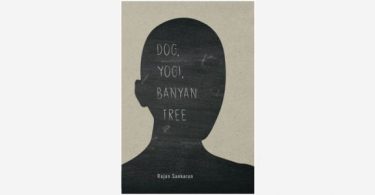I have just finished reading Discovering Life: Homeopathic Portraits, an In-depth Modern Clinical Materia Medica, written by eminent classical homeopath Dr. Luc De Schepper. Because my day job is working as a holistic veterinary surgeon, one could think that there would not be much to interest me in a homeopathic book about human beings. However, Luc writes on such a grand scale with universal values that pertain to all conscious beings that I was spellbound. This wonderful materia medica is not only about treating a particular type of body that is functioning in a particularly unusual fashion, but is also about life itself, and about how a being’s vital forces are continually striving for ultimate perfection, not just to preserve its own health but to live a full and conscious life.
There have been so many homeopathic materia medica published, that when a new one arrives with its particular angle on remedies like; First Aid Remedies, Pocket Manual, Desktop, Comprehensive or whatever series of remedies, we can just say, Ho Hum, not another with all the same dry, basic stuff rehashed. Homeopathic Portraits is new and quite different.
The most important thing for me is that this huge book (at 626 large pages), is really enjoyable and exciting reading. As the pages went by I found myself limiting how much I read each day so that it didn’t finish too quickly. Luc’s basic idea is that at the heart of each being is a cyber delusion that is driving them to do the good and bad things that they do during their existence.
To quote: “Cyber delusion comes from the Greek cybernetes, meaning “the helmsman”: he who steers the ship and constantly adjusts the tiller of the ship in response to the information obtained from the environment. The helmsman is the cyber delusion or fixed idea that steers the ship, the sum of the personal conscious and unconscious. Most people are only partially aware of the conscious part of their life and completely unaware of their unconscious forces, so the core delusion, hidden and roaming in the vast unconscious darkness, steers and dictates the ego, master of the conscious (the tiller).”
For each remedy Luc has distilled out what he calls a “cyber delusion”, from amongst the many delusions each remedy state has given us in provings. For instance for Baryta carb he has “He walks on his knees”, and for Pulsatilla he has “He is all alone in the world”. We can all understand these examples easily as they are what we expect of those well known remedies, however there are some cyber delusions that I found more surprising like Sepia’s “Her family will starve”; Lycopodium’s “He has done wrong and everything will disappear” and Hyoscyamus’ “He is being sold”.
Luc then goes on to examine and explain why and how that being will compensate and adjust their lives in order to satisfy this core delusion. He does this “how and why” using his many tools of the trade- from his experience of Traditional Chinese Medicine, his own extensive homeopathic case work and also from drawing on his deep understanding of the works of Carl Jung.
On cure Luc says, “Every sickness is a musical decomposition and every cure is a musical composition. The experience of recovery is not unlike a coming out, a process in which the patient- with judiciously applied doses of the simillimum- begins to peek out from an enclosed world and reach a place of clarity where he is suddenly freed from the fixed ideas of the cyber delusion.”
One thing Luc does very well is cross referencing remedies and he does this also with his analysis of treatment modalities. For example – “An emotion such as fear is addressed in Traditional Chinese Medicine with a correction of the kidney imbalance, but no differentiation in treatment is made for different kinds of fear: fear of crowds, the future, disease, the dark, lightning, failure in business etc. Homeopathy is capable of matching more than one remedy to each kind of fear.”
Remedy comparisons run through the text. For example, when discussing the duty issue in Sepia, the personalities to be discussed here all think that their sense of duty is “reasonable”, but those who live with them might beg to differ! Duty can be limited to family only, as it is in Kali-c, with the core delusion “an abyss behind her” whose exercise of duty is more like a reign of dictatorship; duty can be focused mainly on one’s own person and concerns (Arsenicum), in which case it is called selfishness, and is created by Arsenicum’s core delusion “she is being watched and her family will starve”; or a sense of duty can be felt towards the world as in the case of Aurum, driven by the core delusion “neglects his duty and deserves reproach”.
At the end of each remedy there is a section called “Golden tips from the masters” that has just that, ten or so clinical tips in which this remedy has been found useful by the old masters. An example is at the end of the Pulsatilla chapter, where he notes that Pulsatilla is useful for “Loss of smell and taste and Pulsatilla is the chronic of Kali-bi.” And for Lachesis: “When Lachesis becomes manic she goes on a shopping spree.” I don’t know which old master he got that one from!
Luc has also interspersed his own clinical cases throughout and these help bring the remedy portraits to life. These remedy descriptions contain more metaphysical than physical attributes or modalities and Luc incorporates a lot of the actual words from provings in his sentences. These are printed throughout the book in italics. In his chapter on Silica he says “Compare Silica also with Pic-ac, who is ambitious, feels the need and duty to perform well and who as a consequence exerts himself and then lacks will power to undertake anything, and with Argentum-nitricum, an overemotional and often irrational and impulsive individual with weakening mental facilities (he feels very much affected bodily and mentally; he does not undertake anything lest he should not succeed).
And we find this in Thuja. “But Thuja’s worst fear is borne out as his memory weakens to the point where he is forgetful on which side of the street his house was.” Helplessness is expressed as a constant fear of evil, a strong irresolution, and an inconsolable anxiety about his family while on a short journey.
There are around 50 remedies covered in this materia medica. All the polychrests are here and a couple of lesser lights like Lyssinum (cyber delusion “something terrible is going to happen”) and Ambra grisea (cyber delusion “sees diabolical, ugly and hideous faces crowded upon him, especially on waking”).
I actually wanted him to do another 150 remedies!
I will let Luc have the last word- “A further goal of this materia medica is to help homeopaths aid their patients in attaining the highest form of completeness: by uncovering what is hidden and unknown in the individual’s shadow side, integrating the dark unconscious elements into consciousness, and accepting the soul mates of anima and animus. A great block to personal individuation and the achievement of self-realisation is removed when, with the help of the simillimum, a person finds the courage to investigate his unconscious. Once a person becomes more complete through the acceptance and acknowledgment of the skeletons in their closet, and desires to change and integrate the darkness into her consciousness, that person can become a soloist. He can do what so few among us can: achieve ego loss, in the sense of indifference to the opinions of those who are driven by envy, competition and ignorance. He enjoys life regardless. Such an individual does not say, “I enjoy Rome”: rather he says “I enjoy myself in Rome.” We should remember that wealth and beauty do not last: character and individuation do. Through the investigation of the unconscious, aided by the simillimum, the homeopath helps the patient to remove the obstruction blocking his power; then, the patient can make the most advantageous use of the personal qualities he possesses. The liberated individual goes on to live a life full of meaning and rich in thought.”
This book is available through Dr. Luc’s website:




Yes..Dr. Luc’s portraits are so wonderfuly useful. I am correctly biased since Dr. Luc was my Homeopath ( and also helped my now adult children) and eventually a mentor. His systemic insights connect the body and mind in a unigue way that probes the depth and needs of the vital force. I have adapted his perspective on cyber delusions and it has allowed me as a Psychotherapist and Homeopath to access one’s temperament and grievance, matching it to a needed simillumum. I use his Portraits on a regular basis and it forms a basis to many of my writings and experiences. I agree wholeheartedly with this review!!
You’re right! As all the other books of Luc, this is, again, a must-read!
Great insight doctor want to read the book.
If you want to learn about the core delusions of the polycrests , I highly recommend this book.